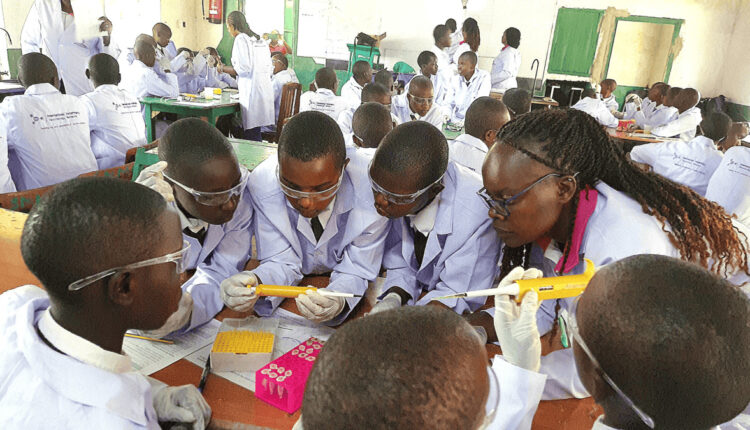Kenya’s Competency-Based Curriculum (CBC) marks a transformative shift in education, prioritizing learners’ strengths, interests, and equitable access. As Grade 9 learners approach the critical transition to senior secondary school in 2025, understanding the placement process is vital for teachers, parents, and students alike. This comprehensive guide breaks down the key steps, pathways, and considerations to ensure a smooth transition.
Understanding the Assessment & Placement Process
The Kenya Junior Secondary Education Assessment (KJSEA)
Scheduled for October 27–November 5, 2025, the KJSEA determines senior school placement through a blended evaluation:
- 20% Kenya Primary School Education Assessment (KPSEA): Results from Grade 6.
- 20% School-Based Assessments (SBAs): Continuous evaluations in Grades 7 and 8.
- 60% Summative Evaluation: Final Grade 9 exams.
Why It Matters
- Teachers: Ensure SBAs are administered consistently and transparently.
- Parents: Track your child’s progress across Grades 6–9.
- Students: Consistency is key—every assignment and exam counts!
Choosing Career Pathways: Aligning Passions with Opportunities
Learners select one of three pathways based on aptitude and interests:
- STEM (60% slots)
- Focus: Science, Technology, Engineering, and Mathematics.
- Ideal for students excelling in math, sciences, or technical fields.
2. Arts & Sports Science (15% slots)
- Focus: Creative arts, performance, and athletics.
- Tailored for students with talents in music, drama, or sports.
3. Social Sciences (25% slots)
- Focus: Humanities, business, and social studies.
- Suits learners interested in law, education, or entrepreneurship.
Implications for Stakeholders
- Teachers: Guide students in self-assessment to align strengths with pathways.
- Parents: Discuss career aspirations early to inform choices.
- Students: Research pathway requirements and future opportunities.
School Selection: Strategic Choices for Success
Learners list 12 schools across their top three pathways:
- 1st-choice pathway: 7 schools.
- 2nd-choice pathway: 3 schools.
- 3rd-choice pathway: 2 schools.
Boarding vs. Day Schools
- 9 Boarding Schools: 4 within home county, 5 outside.
- 3 Day Schools: Within home sub-county/county.
Tips for Selection
- Prioritize schools with strong programs in your chosen pathway.
- Balance ambition with practicality (e.g., proximity, competitiveness).
The Automated Admission Process: Steps Simplified
1.Download Admission Letter
- Visit education.go.ke or kemis.education.go.ke.
- Enter the learner’s assessment number to access the letter.
2. Authentication
- Submit the letter to the primary school headteacher for verification.
3. School Verification
- The admitting school’s principal confirms the placement.
Note: Lack of internet access? Collaborate with schools to assist in retrieval.
Placement Considerations: Balancing Merit, Choice, and Equity
The system prioritizes:
- Merit: KJSEA performance is the primary factor.
- Learner Choice: Preferences are respected where possible.
- Quota System: Ensures regional balance and public/private school equity.
- Diversity: No more than 5 learners from the same junior school in one boarding school.
Special Provisions
- Top STEM Performers: Top 2 learners per gender/sub-county secure preferred boarding schools.
- Learners with Special Needs: Placed in schools equipped to support their requirements.
What This Means for You
For Teachers
- Prepare students for SBAs and Grade 9 exams through targeted revision.
- Advocate for learners with special needs during the placement process.
For Parents
- Stay informed about deadlines and requirements.
- Support your child’s pathway choice without imposing personal preferences.
For Students
- Focus on long-term goals—your performance opens doors!
- Seek mentorship from teachers or professionals in your desired field.
Frequently Asked Questions
Q: Can a student switch pathways after placement?
A: Transfers may be possible but are subject to school capacity and performance.
Q: How are boarding schools allocated across counties?
A: The quota system ensures fair distribution, prioritizing merit and regional balance.
Q: What if technical issues arise during admission retrieval?
A: Contact the Ministry of Education or your school for assistance.
Expectations: Challenges and Opportunities
While the CBC transition promotes equity and talent development, its success hinges on:
- Resource Allocation: Ensuring adequate schools, especially for STEM and special needs.
- Digital Access: Bridging gaps for families without internet.
- Awareness: Continuous stakeholder education on processes and deadlines.
Final Thoughts
Kenya’s CBC transition empowers learners to own their educational journeys. By combining merit, choice, and inclusivity, it aims to nurture innovators, artists, and leaders. Stay proactive, ask questions, and leverage school resources to navigate this milestone confidently.
Stay Updated: Bookmark the Ministry of Education and KEMIS portals for real-time updates.
Teacher.co.ke is committed to supporting Kenya’s education community. Share this guide to help teachers, parents, and students prepare for 2025!
Engage With Us:
Have questions? Comment below or reach out at info@teacher.co.ke. For workshops on CBC transition strategies, visit our events page.
Together, we shape futures.



Comments are closed.